Healthy Eating
Healthy eating is all about consuming a balanced and nutritious diet that provides the necessary nutrients, vitamins, and minerals for optimal health and well-being. It involves making food choices that support overall health, maintain a healthy weight, and reduce the risk of chronic diseases.
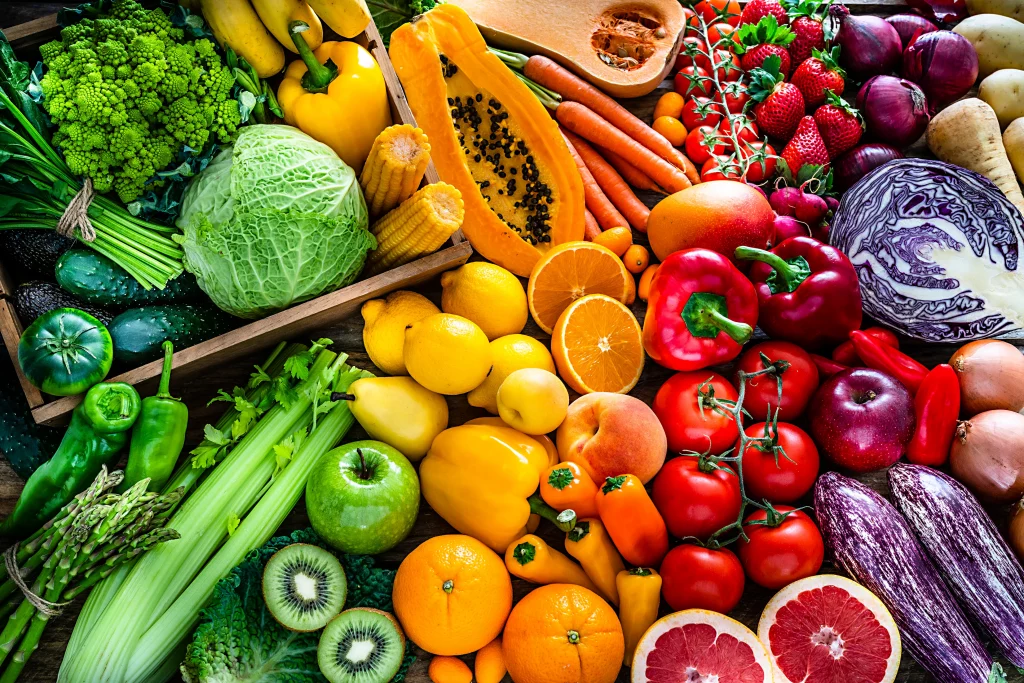
Top Tips
-
Eat a rainbow of fruits and vegetables - it is the simplest way to ensure a range of nutrients.
-
Eat local seasonally available foods - to optimise nutrients, flavour and quality.
-
Buy organic if you can - this will reduce the amount of pesticides that may enter your diet.
-
Avoid processed foods - which are often high in added sugars, unhealthy fats, and sodium.
-
Keep salt to a minimum - use fresh herbs and spices to flavour food and season and with salt at the end
-
Do not overuse meat - it is not the only source of protein
-
Reduce added sugars - use healthier sweeteners like honey or maple syrup in moderation.
-
Don't be a piggy! - eat when you're hungry and stop eating before you're absolutely stuffed..
Nutrition Info
Start with Portion Sizes - Eat the Right Amount of Food
The rule of palm is a simple way to help you know how much food to eat for a healthy meal. It means that for a balanced plate, we should have:
- One portion of protein (like meat, fish, or beans) that is about the size of our palm.
- One portion of complex carbohydrates (like rice, pasta, or potatoes) that is also about the size of our palm.
- Two portions of fruits and vegetables that are about the size of our palm combined.
By following the rule of palm, we can make sure we have a good balance of different foods on our plate and eat the right amount for our body's needs.
Remember, it's not just about eating good foods, but also eating the right amount.
How many Calories should I need?
To calculate how many calories you need, it depends on your gender and how active you are. On average, a physically active man needs about 2500 calories a day, while a physically active woman needs about 2000 calories a day. These recommendations are based on the assumption that adults do at least 30 minutes of moderate-intensity activity five or more days a week. If you do less activity, you may need fewer calories. Remember that it's normal to have snacks between meals, so make sure to consider that when planning your calorie intake.
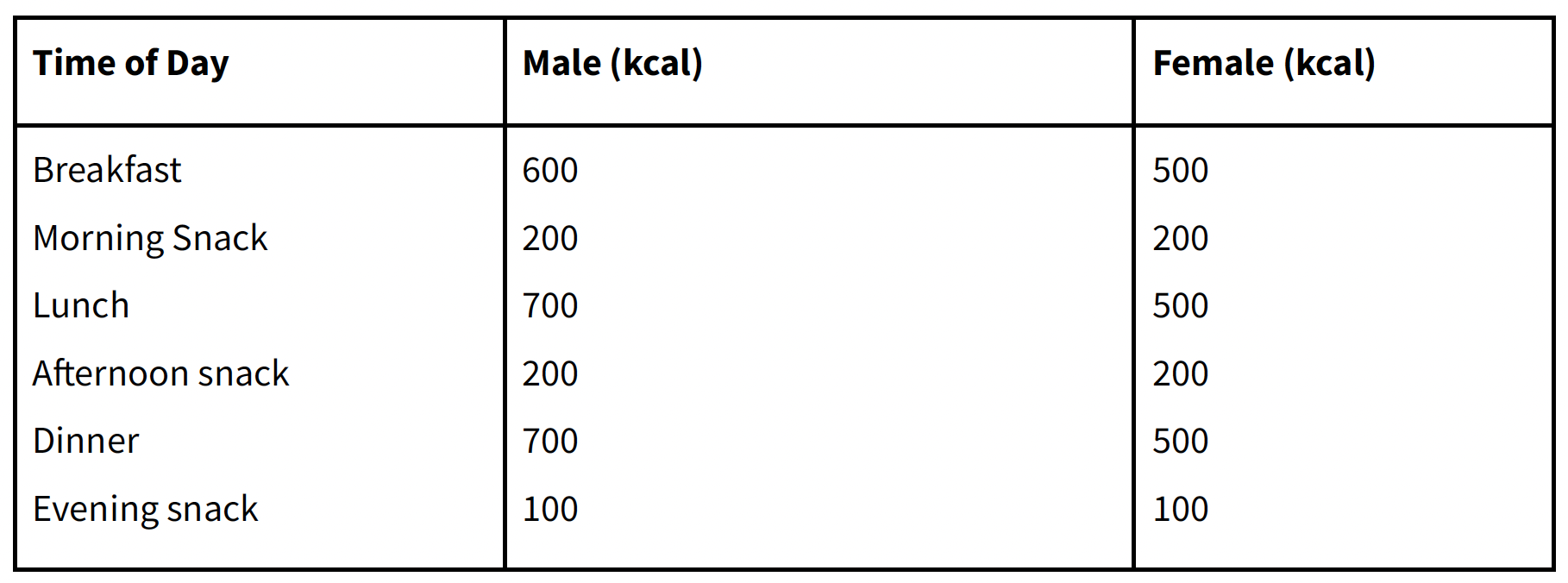
If you want to know exactly how many calories you need or if you're following a specific diet, it's best to consult a healthcare professional. A great app for calorie calculating is NutraCheck
Processed Foods
Think about it, if you are eating processed “diet” foods ( low fat biscuits, calorie-free soft drinks) you are not fuelling your body with naturally nutritious, healthy foods. Even though you are eating low calorie foods you are missing out on essential nutrients. You need to eat appropriate proportions of real foods to thrive and glow.
Macronutrients
The three main building blocks in nutrition are carbohydrates, protein and fat. These substances provide our bodies with energy and are required in large amounts each day. The term energy and calories will be used interchangeably in this course.
● Carbohydrates include grains (pasta, bread, oats), legumes, dairy, fruits and vegetables. ○ 4 kcal/gram
● Fats include animal fats (butter, visible fat on cuts of meat, eggs, cheese, cream) and plant oils (olive oil, nuts, seeds). ○ 9 kcal/gram
● Protein includes meat, fish, eggs, beans, nuts, seeds, and grains and dairy. ○ 4 kcal/gram
As you can see there is overlap between macronutrients because many foods contain two if not three different macronutrients. For optimal energy and nutrition, we should eat foods from a variety of sources. When we consume excess energy, our bodies store this energy in skeletal muscle, the liver, and adipose tissues (fat).
Micronutrients
Micronutrients are classified as vitamins and minerals. They do not provide the body with energy and are required in small amounts each day. They help the body perform certain functions and allow our bodies to convert macronutrients into energy. Calcium and vitamin D are examples of micronutrients that keep our bones strong. Iron is another micronutrient that we require for healthy blood cells. Getting micronutrients form whole food sources is a much better way than through oral supplements because nature has packaged them in appropriate doses and in appropriate combinations. The benefits of eating whole foods surmount eating a diet of nutrient-poor foods and sporadically supplementing with concentrated vitamins. Supplements can also put unnecessary stress on your organs depending on when they are taken and in what doses. They are also much more costly than natural foods. This course will explain what foods contain certain micronutrients and why they are necessary. Vitamins and minerals will be discussed in greater detail later on in the course.
Water
Water is essential to life. By weight, approximately 70% of our body is made up of water. The recommended daily intake of water for adults is about 1.5-2 litres. We consume water by drinking water (and other beverages) and through the foods we eat. Most fruits and vegetables contain up to 90% water, so be sure to include those foods when calculating your intake. Thirst and dark urine are signs of inadequate hydration.
Government Guidelines
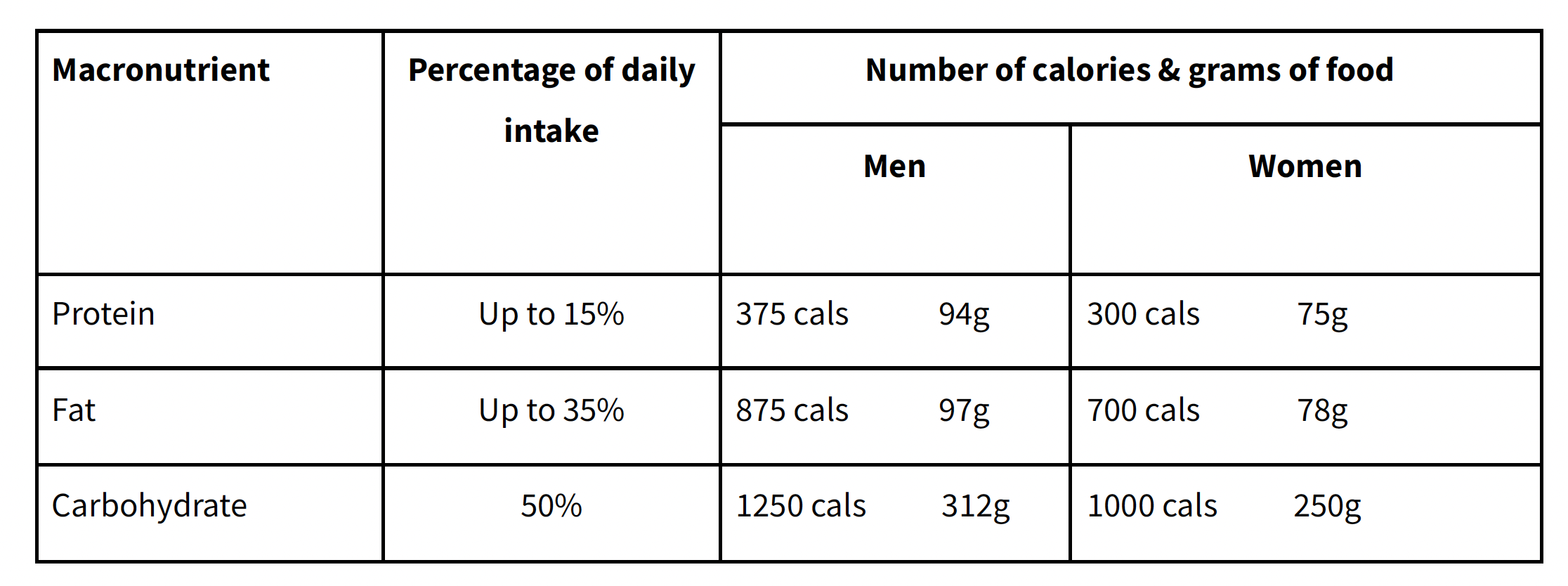
Low Glycaemic Variation (lower in carbohydrates)
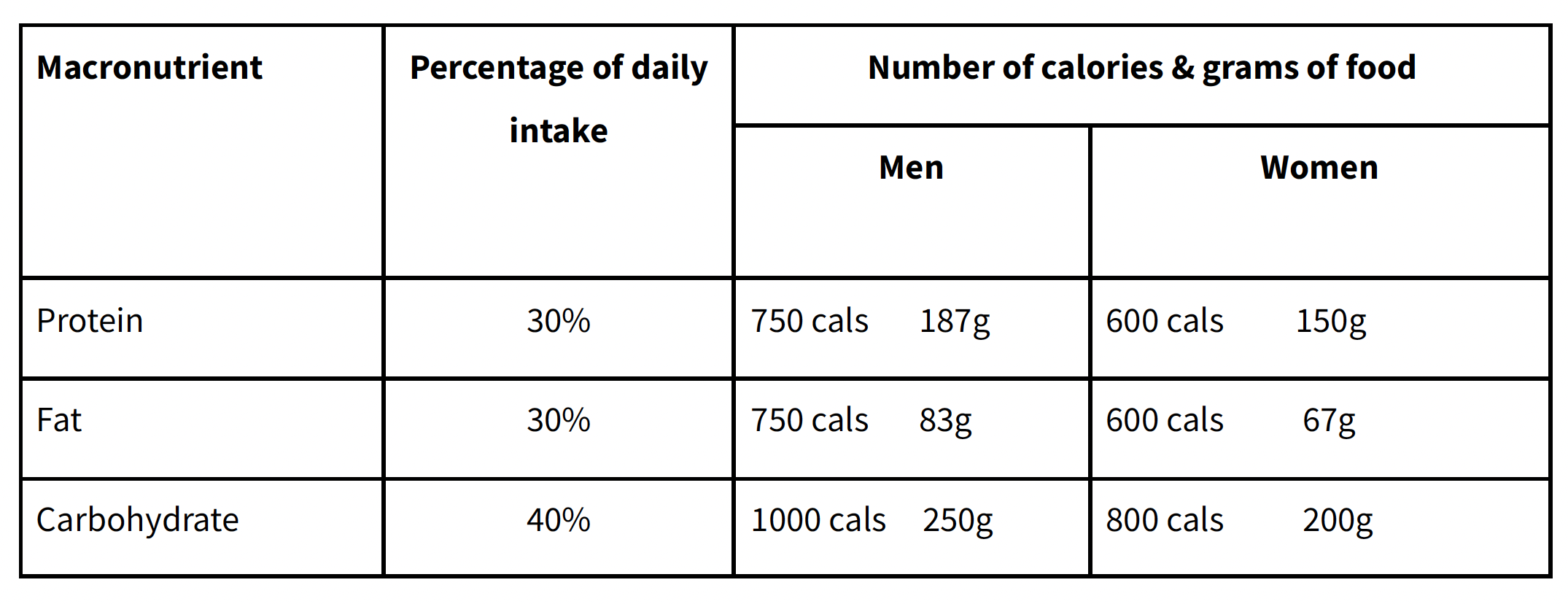
Body Mass Index (BMI)
BMI is a statistical measure that is used to determine if an individual has a “healthy” weight to height ratio. The “healthy” BMI range is identified as 18.5 to 24.5 kg/m2. To calculate BMI, divide the individual's weight (in kilograms) by the square of their height (in metres).
It is important to note that calculating someone’s BMI is not always accurate. It can be skewed by an individual with a lot of muscle mass and is influenced by age and ethnicity. For example, a body builder may be perfectly healthy but his BMI will be above his range rendering him obese when this is not the case.
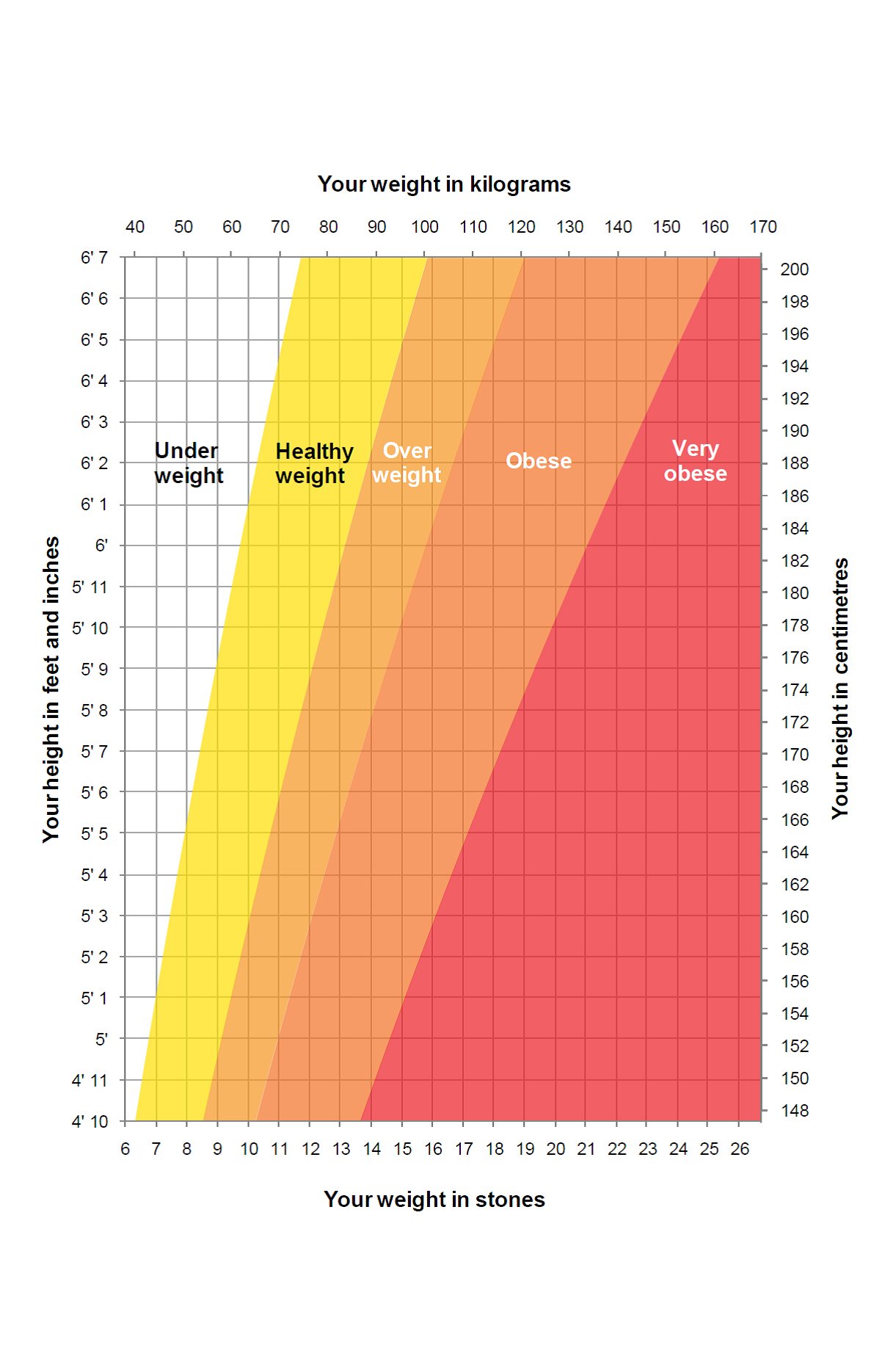
Metabolism
Metabolism is used to define the process of breaking down macronutrients to produce energy. In addition to energy, macronutrients are broken down into units that are used to maintain muscles, fat tissue, hormones, and cells. Exercising, muscle mass, and eating times can influence metabolism levels. As mentioned earlier, different macronutrients provide different amounts of calories. Keep in mind that alcohol also supplies calories at 7kcal/gram so be sure to include caloric intake from alcoholic beverages.
Avoid and Eliminate Toxins
We are exposed to toxins every day from the food that we eat to the air that we breathe. They can be inhaled, swallowed or absorbed via the skin, travelling into the bloodstream and distributed to various organs. Toxins can be naturally present in food, made as a by-product by the body, or found on foods that have come into contact with chemicals (e.g. pesticides). Some toxins are tolerated and excreted via natural means; however others may cause toxicity and health concerns. Humans can eliminate some toxins by drinking enough water each day. The immune system is the body’s defence against all of these toxins and is pivotal in the fight against infection and diseases. Over 70% of our bodies immune function is found in our gut. It is important that we eat the right foods to keep our gut and immune system healthy. To aid the overall reduction of toxins that enter the food chain ask the following:
● Is it from a local farm or producer? If it is, it will reduce the overall carbon footprint
● Is it organic? This will help to reduce the amount of pesticides that may be ingested.
Raw versus Cooked Foods
Like most things in nutrition, having a variety of foods prepared in a variety of different ways is best practice. Some clients may be on strict raw food diets (which we will discuss at more length later on) whereas others may have poor teeth or sensitive stomachs, requiring cooked or soft foods. It is important to find out why a client desires raw or cooked food. When food is cooked, the enzymes (which are the components responsible for the digestion of foods) are broken down and no longer function. This can make some healthy components of foods unattainable whereas it makes others more accessible. Some nutrients such as lycopene (an antioxidant) in tomatoes can be absorbed much easier once cooked by breaking down cell walls, allowing for enhanced absorption. On the other hand cancer-fighting components (from glucosinolates) in broccoli and cabbage cannot be absorbed after cooking because the enzyme that activates them is ruined by heat. Vitamin C and some B vitamins also break down when heated whereas it’s easier to get B12 (only found in animal products) and iron from things like cooked meats. If cooking vegetables is the only way your client will eat them, cooked vegetables are better than no vegetables. If they are more flexible, aim to have a variety of cooked and raw foods available throughout the day for variety and maximum health benefits.
